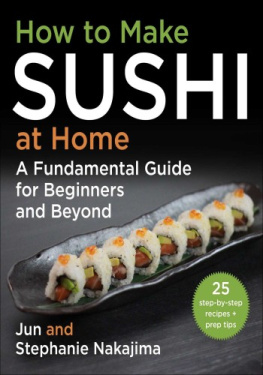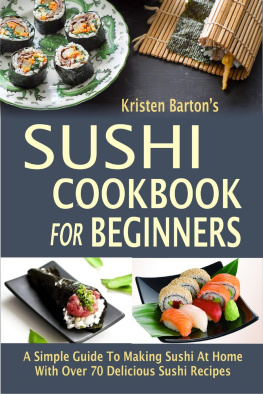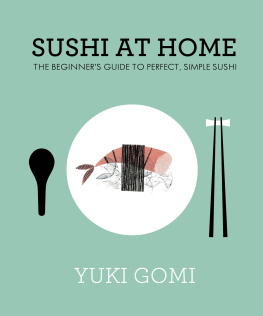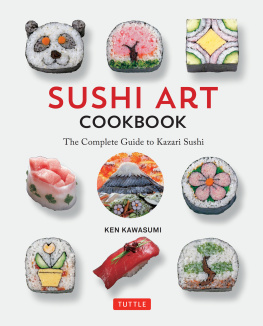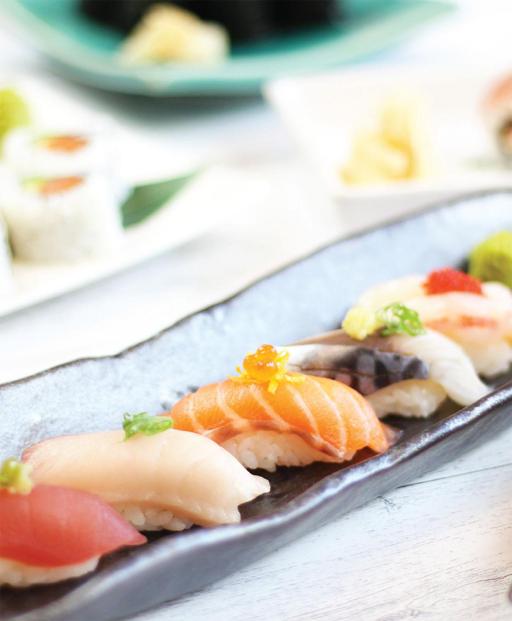
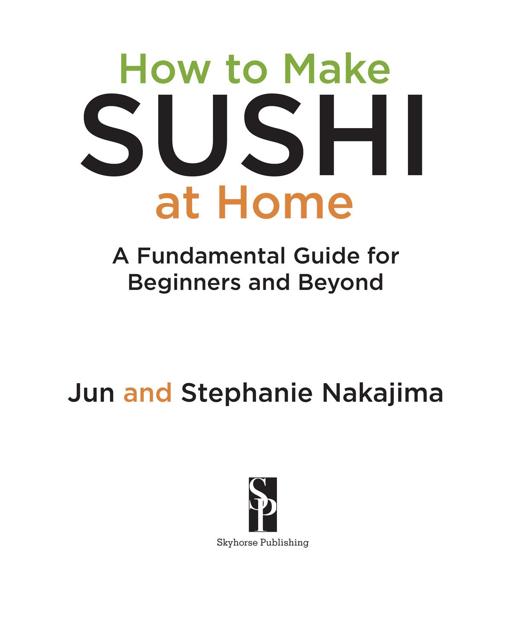
Copyright 2023 by Jun and Stephanie Nakajima
All rights reserved. No part of this book may be reproduced in any manner without the express written consent of the publisher, except in the case of brief excerpts in critical reviews or articles. All inquiries should be addressed to Skyhorse Publishing, 307 West 36th Street, 11th Floor, New York, NY 10018.
Skyhorse Publishing books may be purchased in bulk at special discounts for sales promotion, corporate gifts, fund-raising, or educational purposes. Special editions can also be created to specifications. For details, contact the Special Sales Department, Skyhorse Publishing, 307 West 36th Street, 11th Floor, New York, NY 10018 or .
Skyhorse and Skyhorse Publishing are registered trademarks of Skyhorse Publishing, Inc., a Delaware corporation.
Visit our website at www.skyhorsepublishing.com .
10 9 8 7 6 5 4 3 2 1
Library of Congress Cataloging-in-Publication Data is available on file.
Cover design by David Ter-Avanesyan
Cover photo credit: Jun and Stephanie Nakajima
Print ISBN: 978-1-5107-7350-9
Ebook ISBN: 978-1-5107-7351-6
Printed in China
Contents
Introduction
S ushi is by far the most well-known Japanese cuisine and has become extremely popular at a global scale. What used to be available only in Japanese restaurants is now readily available in a variety of food establishmentsgrocery stores, school cafeterias, even gas stations. Depending on where you live, the sushi youre familiar with could be quite different than the authentic and traditional style originated in Japan. But thats the beauty of it. The concept of sushi has grown so multicultrally that theres new and interesting fusion creations all the time. Although I respect and love the tradition of Japanese sushi, it really excites me to see people having fun and exploring new boundaries when making sushi.
Traditionally in Japan, to become a professional sushi chef would require years and years of dedication. The first years were spent meticulously learning and repetitive training on cooking rice and preparing vegetables. Not to mention the cleaning and maintenance of all supplies, equipment, and the restaurant itself. Often you wouldnt even be able to touch the fish until a few years in. Though this tradition has faded away a bit in modern years, the culture still does exist and lives on. And thankfully so, because theres nothing quite like a perfectly crafted piece of nigiri by a traditionally taught master sushi chef. But dont worry, Im not asking you to dedicate years of your life to learning and crafting your sushi skills.
Sushi is often seen as a very intimidating cuisine that scares even the best chefs. And yes, it is a very complex skill filled with traditional techniques that take years upon years to master. But dont let that discourage you from even trying! I will guide you step-by-step through the fundamentals of sushi and teach you how to take that skill and make it your own.
My twenty-plus years of training as a sushi chef originally started from my dad, whos owned and operated a Japanese restaurant for more than thirty-five years. He taught me all the fundamentals and guided me throughout the first part of my sushi career. I then started my own sushi catering company, which I operated for more than ten years. During this time, I have had the pleasure of working with so many amazing clients. Ive also had countless opportunities to teach how to make sushi and I noticed there was a gapbetween people who wanted to make sushi but didnt know how to even start, scared to even. That is the reason why I decided to write this book, to share my knowledge and teach the proper fundamentals to those who are curious about making sushi. Because as intimidating as it may be, making sushi is actually quite easy to do at home.
To those who didnt know where to start, well, you chose the right book, and Im excited for you! This is the start line. I have compiled years of my experience and simplified it into this one single book so that it can be a gateway to your sushi journey. Whether your goal is to make your favorite sushi at home, impress your family and friends with your own sushi creations, or practice to become a professional sushi chef, this book will help you accomplish those goals.
Youll find many of my personal recipes in this book; however, this is not just a recipe book. More so, it is a skills development book, that skill being the art of sushi. Sushi is a unique and amazing cuisine where once you have the basics down, you can let your imagination take over. Take a sushi roll, for example; I can share hundreds of recipes on all different types of rolls and make this book four-hundred-plus pages, but the fundamental techniques for each are very similar. Sure, theres slight differences (which I do teach), but most of it just takes repetition and practice. My goal is to teach you the fundamentals of making sushi, which will allow you to confidently take that skill and dive into the art of sushi on your own. The beauty of sushi, especially making it at home, is in the endless possibilities and the fact that you can do whatever you want.
If you give a man a fish, you feed him for a day. If you teach a man to fish, you feed him for a lifetime.
Yes, pun intended.
Jun Nakajima, Summer 2022
P. S. Visit us at www.TheSushiMan.com to learn more about our story.
History
S ushi has evolved throughout centuries before it became that which we know today. Although Japan is the sushi capital of the world, the original concept was said to be founded in southern China, where fish was pickled and fermented by wrapping it with rice, dating all the way back to around the second century. This method was to preserve the fish and the rice was actually thrown out.
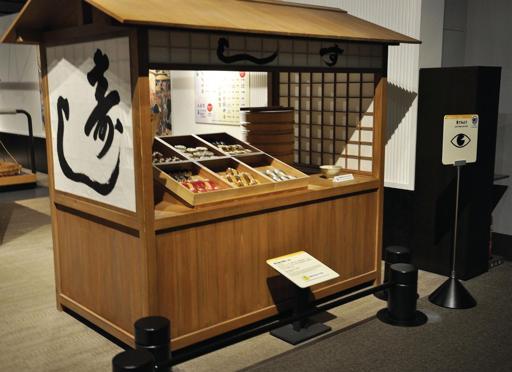
Example sushi stall from the Edo period from the Edo history museum. ( dreamstime.com / Viocara)
It wasnt until about the eighth century that this concept spread to Japan and became known as narezushi (matured sushi). When lifestyles evolved, so did the sushi. Narezushi became something called namanarezushi where the fish was consumed much earlier (while it was still partially raw) and the rice was also consumed. Fast-forward to the Edo period, between 1603 and 1867 (Edo is what we know as Tokyo today), vinegar started to be used to speed up the fermentation process. The addition of vinegar not only made it immediately consumable but introduced a whole new flavor profile to what sushi was then.
Then around 1820, a man by the name Hanaya Yohei (often referred to as the founder of sushi) created whats known now as nigirizushi. Until this point, sushi was either still wrapped in rice or pressed in a box form called oshizushi. Yohei took the vinegared rice and shaped it into a ball and added the fish on top, which revolutionized the sushi industry. During this time there was no refrigeration yet, so the fish had to be prepared first, often cured with salt, vinegar, or cooked. This became the origin of what we call Edomaezushi (Edo-style sushi).
As the years went on, this new nigiri-style sushi spread across the country like wildfire and became the standard for all sushi restaurants. At one point it was said that there was an average of one to two sushi restaurants (or stalls) within every couple blocks in Edo. And as refrigeration technology advanced, restaurants opened all throughout the country and eventually expanded worldwide.
Next page
